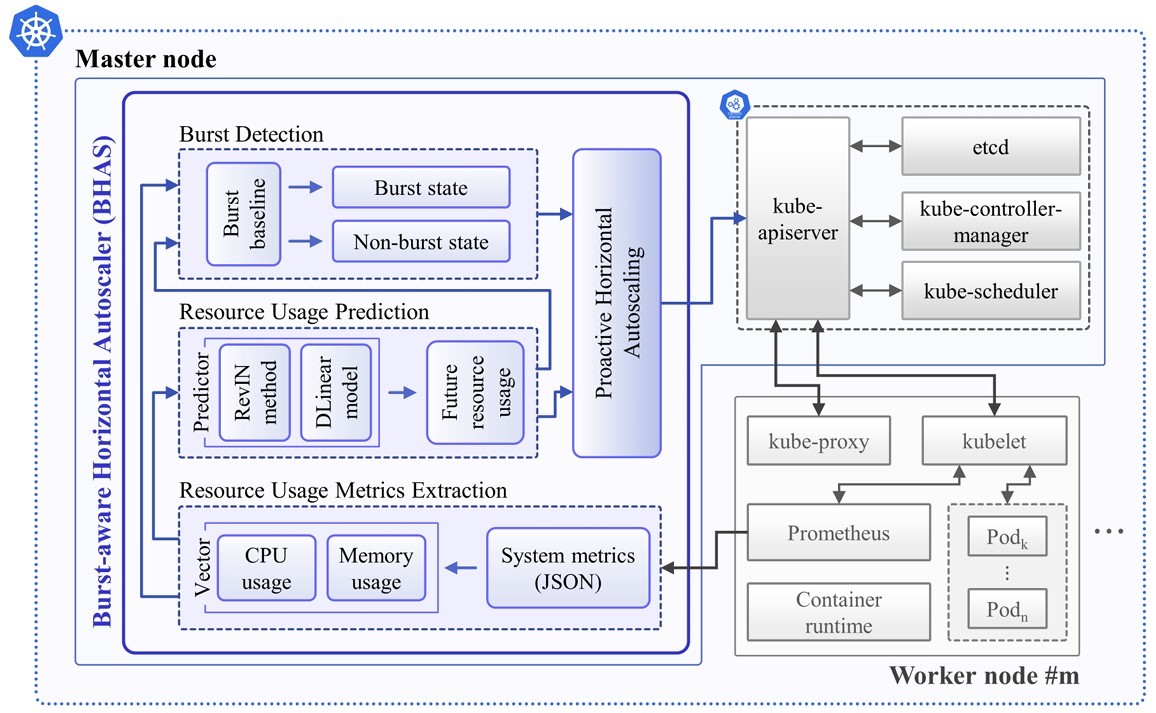Burst-Aware Horizontal Autoscaling Based on Deep Learning for Stable Microservices
May 2024. By Young-Sik Jeong
Keyword: Cloud computing, Resource management, Container autoscaling, Burst detection, Time-Series forecasting

In the cloud computing environment, container autoscaling is a key resource-management method that provides continuity and scalability for microservices. However, the autoscaling method based on a reactive mechanism is unable to respond instantly to workload changes, leading to resource wastage. Moreover, this method struggles to identify irregular burst states accurately in the workload, resulting in service disruptions. Accordingly, this study proposes a burst-aware horizontal autoscaling (BHAS) method that operates using a proactive mechanism to enhance the stability and resource efficiency of microservices under burst workloads. BHAS uses a time-series forecasting model that combines the reversible instance normalization method with the decomposition linear to predict future resource usage. Then, BHAS flexibly detects local and global bursts in the predicted future workload comprising heterogeneous resource usage. Finally, it performs scaling by calculating the number of efficient containers at each time point for the detected burst and nonburst states. The performance evaluation of BHAS in a cloud-native computing environment revealed that the average number of resource overload instances was reduced by up to 96.74% compared to the existing autoscaling techniques applying the actual container workload trace. In addition, resource utilization improved by approximately 3.3% compared with the reactive mechanism-based autoscaling method.
